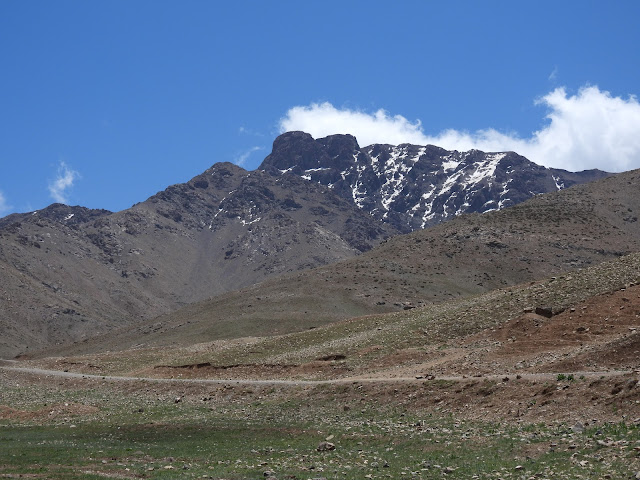Dungeness
Monday 31st January
An early finish to a wintering bird survey in west Kent gave us enough time to fit in a quick visit to Dungeness before heading back to Sussex. Our first stop was at the fishing boats where we were assured by birder who was just leaving that things were quiet. Very little was passing (just a couple of Gannets and a Kittiwake in the half hour or so we were there) but on the very rough sea there were large numbers of Cormorants and Guillemots (but no Razorbills) and at least 20 Red-throated Divers not to mention a Grey Seal that surfaced close inshore.
At Cook's Pool we didn't have to wait long before the two Glossy Ibises that have been around since October flew past and landed on a small pool near the reserve entrance. Although the birds were only a few metres away from the car, my attempts at photography were scuppered by too many reeds in the way, hence the poor image below. Back in the day, Glossy Ibis was a very rare bird in the UK necessitating a visit to Stodmarsh in Kent where two long-staying individuals took up residence during the period between 1975 and 1992 and could be seen late afternoon flying over the Lampen Wall to roost. These days however it is no longer a rare bird and it seems only a matter of time before they start breeding regularly in the UK. Also seen here were a Great White Egret and a Marsh Harrier while further along the road in the sheep field at Cockles Bridge were 4 Cattle Egrets - another recent colonist and now regular at Dungeness.
The remainder of our time in Kent was spent on Walland Marsh in search of wild swans, stopping first at Dennes Road on the outskirts of Lydd where a herd of 36 Bewick's Swans (including 9 juveniles) could be seen distantly and then at Baynham Farm where 12 Bewick's and 5 Whooper Swans were fairly close to the road though the views were not that good as we were looking into the low winter sun. I can't remember the last time I saw 48 Bewick's Swans in southeast England; sadly this is a bird that is in rapid decline in Britain & Ireland with just 1,278 counted as part of the International Swan Census in January 2020, representing a new low. By comparison, 7,100 were counted in 2010 and 4,392 in 2015. Hard to believe that counts of over 100 were regularly made in the Arun Valley in West Sussex in the 70s and 80s.







Comments
Post a Comment